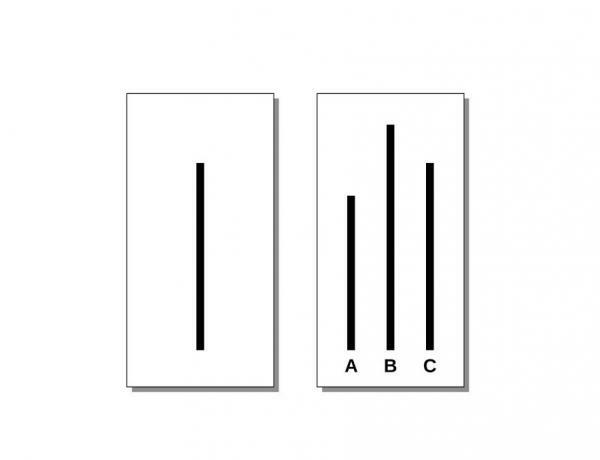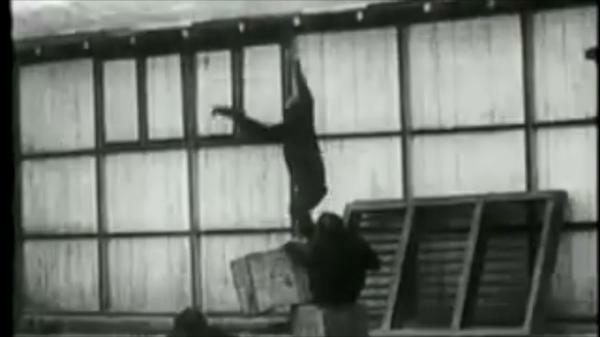
Our knowledge of successful treatment for anxiety disorders continues to advance at an accelerated rate. This progress is due to the hundreds of research studies that have existed to date and especially to the studies on anxiety that are open. Many of these studies are dedicated to testing and developing effective treatment approaches. Here are some of the most popular anxiety theories.
Many of these contributions have referred to the relationship between information processing and emotion. Although various theories have been postulated, there are 3 basic orientations:
- Bioinformational image and affect processing (Lang).
- Associative network concept (Bower).
- Scheme concept (Beck).
The 3 models are based on the belief that there are cognitive structures related to anxiety disorders.
Emotion and Image: Bioinformational Processing
It is based on a "descriptive" conception of the emotional image. Lang:
- It assumes that all information, including mental images, is encoded in the brain in an abstract and uniform way (not in an iconic or analogous way).
- He proposes that emotional images are conceptualized as propositional structures and not as sensory representations.
The information about anxiety is stored in the MLP in associative networks (emotional networks) = propositional networks. For bioinformation theory, the way in which information is stored is not relevant, but the types of information stored and the results produced by the activation of said information. The network can be activated by inputs. When a sufficient number of "nodes" in the network are accessed, the entire network is activated, leading to a variety of behaviors and experiences called emotion. Certain elements of the network may have high associative power, so that the activation of very few key nodes is enough to access the complete program. Emotional memory contains three types of information:
- Information on external stimuli: Information on the physical characteristics of external stimuli (appearance of an animal).
- Information about the answers: Includes facial expression or verbal behavior, overt actions of approach or avoidance, and visceral and somatic changes that support attention and action.
- Semantic propositions: Information that defines the meaning of the object or situation and the responses, the probability of the stimulus occurring, and the consequences of the action.
The units of analysis of bioinformation theory are propositions (units of information that constitute logical relationships between concepts). A proposition ("Nuria reads a book") is made up of "nodes" or arguments (Nuria and book), and a relational or preacher element (reads). Propositions are grouped into networks, networks constitute a associative structure or associative memory of emotion. It constitutes a kind of "affective program". Affective expression occurs when a sufficient number of propositions are activated. In the psychological treatment of phobias, emotional memory is generally activated, through verbal input (script). Lang suggests that for the emotional fear response there is a
IMAGE PROTOTYPE OF FEAR encoded in MLP. The prototype can be activated by instructions, by means of communication or objective sensory stimuli. An important characteristic of the phobia prototype is that it includes information about the responses, that is, a program about affective expression or action set (ex: avoidance / escape). Certain propositions have very strong associations with each other -> they can act as keys to network processing and corresponding action sub-programs. The different components of associative memory are not equally integrated in all anxiety disorders:
- The specific phobia: Highly organized networks, with high associative strength -> Strong disposition for escape and avoidance as part of the phobic prototype. Social Phobia: Networks Defined by Surveillance and Valuation Concerns.
- Agoraphobia: Networks with little associative strength and therefore more difficult to activate.
Lang suggests basic dimensions of behavior such as:
- Valencia (pleasure - displeasure).
- Power (dominance - submission).
- Activation (arousal - rest).
In the latest revision, they introduce the distinction between.
- Strategic responses: Can be described in terms of valence and activation.
- Tactical responses: They are more related to the concepts of dominance and submission (power).
The theory has emphasized the importance of response-based anxiety therapy: it should be more effective than that oriented on the stimulus because it determines a more complete activation of the structure propositional.
Foa and Kozak: The concept of meaning should not be reduced to semantic propositions, but should include all information (encoded semantically and not semantically). His perspective could be understood as a theory on fear reduction, starting from the principles Lang's basics: Information processing is an essential step in the therapy of anxiety. They understand emotional processing as a modification of memory structures, rather than as a mere activation.
Through emotional processing, a correction of the associative networks is carried out. The correction occurs when, by reducing fear through exposure, the information is incompatible with that of the associative network (it contradicts the propositions of the network).
Traditional psychoanalytic theory he proposed that individuals avoid anxiety-inducing thoughts and memories. Brewin suggests that change depends on such memories being readmitted into consciousness with "appropriate affect."
Both Beck and Bower assume that: In patients with an anxiety disorder, there must be a structure cognitive dysfunction that leads them to produce certain biases in all aspects of the processing of the information. They have developed their theory thinking more about depression than anxiety. BECK:
- There is a dysfunctional SCHEME that plays an essential role in the development and maintenance of depression and anxiety.
- Individuals with anxiety disorders have a systematic bias: selective activation of the scheme associated with personal danger, represented in the MLP. The schemes are organized in subsystems or constellations (modes) that correspond to different motivational aspects (depressive, erotic, fear, danger). The reasons why dominance persists in a certain mode is not sufficiently explained.
Bower Associative Network Theory
Emotions are represented in memory in units or nodes, in the form of an associative network (semantic network):
- The nodes are related to other types of information: relevant situations to elicit emotion, gut reactions, memories of pleasant or unpleasant events, etc.
- The activation of an emotional node facilitates the accessibility to the material congruent with the mood -> Hypothesis of the congruence of the mood.
- Memorized material is best remembered when there is a coupling between the conditions in which it was learned originally and the conditions under which it is intended to remember -> Hypothesis of the dependence of the state of cheer up.
There is controversy about the feasibility of the hypotheses derived from the Beck and Bower models. Beck and Bower agree that biases operate at different levels in processing: attention, interpretation and memory. Experimental data tend to indicate that:
- Anxiety seems to be associated with attention biases but not to memory biases. Depression appears to be associated with explicit memory rather than attention biases.
- According to Williams: Anxiety is primarily associated with integration biases (automatic processes and in the initial stages of processing).
- Depression is primarily associated with elaboration biases.
Main paradigms used to investigate possible attentional biases in patients with anxiety disorders:
- Dichotic listening: Simultaneous presentation of 2 auditory messages, having to attend to one of them.
- Stroop test: Say the color of a word that does not match its meaning (word "blue" that appears written in green) -> There is an increase in TR called Stroop interference.
Modified stroop: It is carried out with words that have an emotionally salient meaning ("fear", "snake").
Patients with anxiety should exhibit increased interference (latency) congruent with the relevant stimuli, since the meaning of the word automatically attracts attention.
In these two paradigms, the mechanisms underlying attentional biases. * Reaction time tasks: It makes it possible to eliminate the possible effect induced by multiple processes such as verbal response (in the Stroop) or verbal memory (in dichotic listening). These are tests of visual word processing and directed attention.
Individuals with anxiety disorders should present lower latencies than other individuals when the point is located in the zone of emotionally congruent words -> Threatening-relevant words are detected more quickly by anxious subjects (attention selective).
There is an attentional bias in anxious patients towards threat signals. When words are equal in emotionality, there are no differences: It may be because certain words positive ones show "related emotionality" (The word "relaxed" has emotionality related to "highly strung").
Most positive data (support attentional bias -> specific congruence hypothesis: Specific threats can differentiate subjects with anxiety disorder congruent with threat) correspond to research with patients diagnosed with anxiety disorder generalized. It has also been associated with the trait and state of anxiety (non-clinical subjects). Recently, it has been associated with: social phobias, panic disorder, specific phobias and post-traumatic stress.
Importance of automatic (non-conscious) processing: Studies, based on dichotic listening and Stroop tests, seem to show that the Attentional bias linked to anxiety is determined by mechanisms that operate at the unconscious, unintentional and automatic level (level preattentional). The priming effect (a past experience facilitates the performance of a task that does not require a deliberate recall of such experience), observed In some investigations on implicit memory and anxiety, it has been considered as evidence of the selective automatic processing typical of the anxiety.
Conclusion derived from studies on implicit and explicit memory (they use strategic and elaboration processes, in contrast to automatic and integration processes) is that: Anxiety is associated with a bias congruent with emotion in implicit memory. Depression is related to an emotion-congruent bias in explicit memory.
To what extent does the attentional bias plays a causal and / or pathogenic role of anxiety disorders ?:
- Individuals with high anxiety traits may have a tendency to interpret stimuli as threatening.
- Interpretive bias and high anxiety trait can lead to selectively increasing attention to threat signals, generating a spiral of increased anxiety.
- Attentional bias directly increases the activation of ANS components.
- The attentional bias associated with increased autonomic activation facilitates or generates the Pavlovian conditioning of fear / anxiety responses, leading to the acquisition of disorders of anxiety.
- There is also evidence of the reverse process: attentional bias can be acquired through classical conditioning.
- An increase in autonomic activation can increase the anxiety trait and the tendency to interpret ambiguous stimuli as threatening.
Except for Lang's theory, it cannot be said that with these contributions, there is a specific model of anxiety based on information processing. OHMÁN (1993): Anxiety (acute and stable) originates from biological defense systems. The MODEL is structured on the basis of five concepts:
- Feature Detector: Initial filtering of stimuli before evaluating them. Important for alarm / anxiety / fear processes, as it allows some stimulating characteristics to be directly connected to the activation system. It acts at a level prior to memory (before the individual gives a meaning to the stimulus). It allows discrimination of information to occur. It operates on phobias, panic attack and PTSD. 2.
- The significance assessor: Automatically assesses the relevance of the stimuli that have been filtered. It is part of associative memory systems (processing of emotional responses (Lang) and mnestic representations (Bower)), prioritizing the processing of congruent emotional states. It is, at least partially, a controlled processing system. However, it operates pre-intentionally. "
- Activation system: It serves to provide the evaluator with significance. Explain that the level of anxiety can increase the congruent attentional bias. It also acts on the conscious perception system. Reciprocal communication between activation and autonomous perception (special interest in panic disorder).
- The expectation system: It serves to couple the information within the structures of the associative memory (emotional memory). The better the coupling, the more activation of the congruent structures. Double function in the generation of anxiety: a) It favors the selective processing of congruent information (inducing bias). b) Provides context for conscious interpretation. 5. SYSTEM OF
- Conscious perception: Two functions: a) Consciously integrates the information from the other 3 systems (activation, significance and expectations). b) Select alternatives of action to face the threat (coping strategies).
This article is merely informative, in Psychology-Online we do not have the power to make a diagnosis or recommend a treatment. We invite you to go to a psychologist to treat your particular case.


